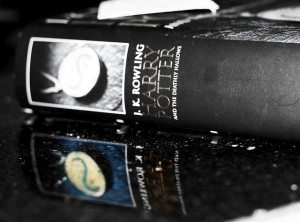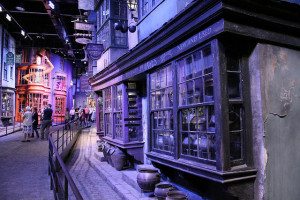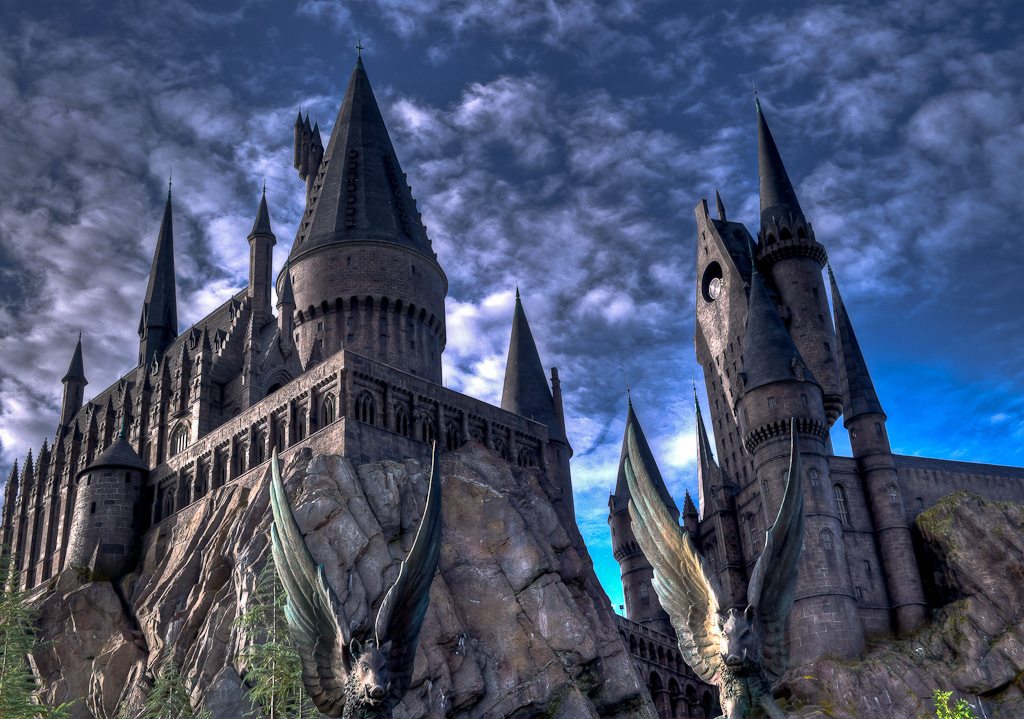Harry Potter and the Never Ending Franchise
[dropcap]T[/dropcap]he Harry Potter era spanned fourteen long and happy years. From humble beginnings in the publication of Harry Potter and the Philosopher’s Stone in June 1997, to the riotous release of Harry Potter and the Deathly Hallows: Part 2 in July 2011. It was an emotional and unforgettable farewell. As Part 2 now stands as the fourth highest grossing film of all time, the series went out with a very loud bang. A bang which, as it turns out, has a few aftershocks.
 As a loyal Potter fan, I find it goes very hard against the grain to disapprove of anything done by the illustrious J.K Rowling. The announcement of the Harry Potter database Pottermore in June 2011 provided a small amount of relief from the prospect of waiting for the last film. I expected nothing more than an online Encyclopedia, with a few inclusions about the inspiration behind the plot. The site certainly provides this, and elaborates upon the books extensively. However, in order to access this, one must plod from Philosopher’s Stone until Goblet of Fire, in a format which is neither as exciting nor as interesting as either the books or the films. I was surprised at how tedious I found it.
As a loyal Potter fan, I find it goes very hard against the grain to disapprove of anything done by the illustrious J.K Rowling. The announcement of the Harry Potter database Pottermore in June 2011 provided a small amount of relief from the prospect of waiting for the last film. I expected nothing more than an online Encyclopedia, with a few inclusions about the inspiration behind the plot. The site certainly provides this, and elaborates upon the books extensively. However, in order to access this, one must plod from Philosopher’s Stone until Goblet of Fire, in a format which is neither as exciting nor as interesting as either the books or the films. I was surprised at how tedious I found it.
I could forgive Pottermore. I decided it was something I could ignore, and pretend that the trajectory of the Potter franchise had ended in 2011. Harry Potter was something that should be celebrated and remembered, in such forms as the Warner Bros. Studios, which preserves the Harry Potter phenomenon brilliantly. Well, apparently we can’t quite seem to let go. Or at least, Warner Bros. can’t quite let go of us.
If anyone wasn’t aware already, the spinoff Magical Beasts and Where to Find Them is set to be released as a trilogy. Inspired by a mere 42 page textbook, written by J.K Rowling for comic relief in 2001, it really does appear to be at first glance, the most feeble excuse for a trilogy yet. The plot of the film features Newt Scamander (the fictitious author of the textbook) in New York, set 70 years before the arc of the Harry Potter series. Though seemingly unrelated to the plot of the series, it makes me question what lengths J.K. Rowling and Warner Bros. will go to ensure nothing can be left to the imagination whatsoever.
There has to be a stage where the author hands their creation to the imaginations of the readers
But for Rowling, this doesn’t appear to have happened yet, despite the fact that the last book was  published 7 years ago. Characters have been expanded upon (most notably, Dumbledore’s sexuality was revealed), the Wizarding World has been extended, and Rowling has undermined major aspects of the series publicly. By this, of course, I am referring to the interview where she revealed that making Ron and Hermione an item was a mistake. These additions and retractions are, in my opinion, unnecessary and undesirable. Would it not be better to allow readers to make up their own minds about the future of Hermione and Ron’s relationship?
published 7 years ago. Characters have been expanded upon (most notably, Dumbledore’s sexuality was revealed), the Wizarding World has been extended, and Rowling has undermined major aspects of the series publicly. By this, of course, I am referring to the interview where she revealed that making Ron and Hermione an item was a mistake. These additions and retractions are, in my opinion, unnecessary and undesirable. Would it not be better to allow readers to make up their own minds about the future of Hermione and Ron’s relationship?
I, myself, have no idea when the world of Harry Potter will stop having alterations or additions. It wouldn’t surprise me at all if The Tales of Beedle the Bard was announced to be released as a trilogy tomorrow morning. If Harry Potter had ended like I believe it should have, in July 2011, I would still be going on and on about how much I missed it. It is undeniably better to finish off a series with millions of people crying out for more, rather than being met with complete apathy.
Image Credits: Header (Flickr/Marco Becerra), Image 1 (Flickr/Anders.Bachmann), Image 2 (Flickr/Dave Catchpole).

Comments